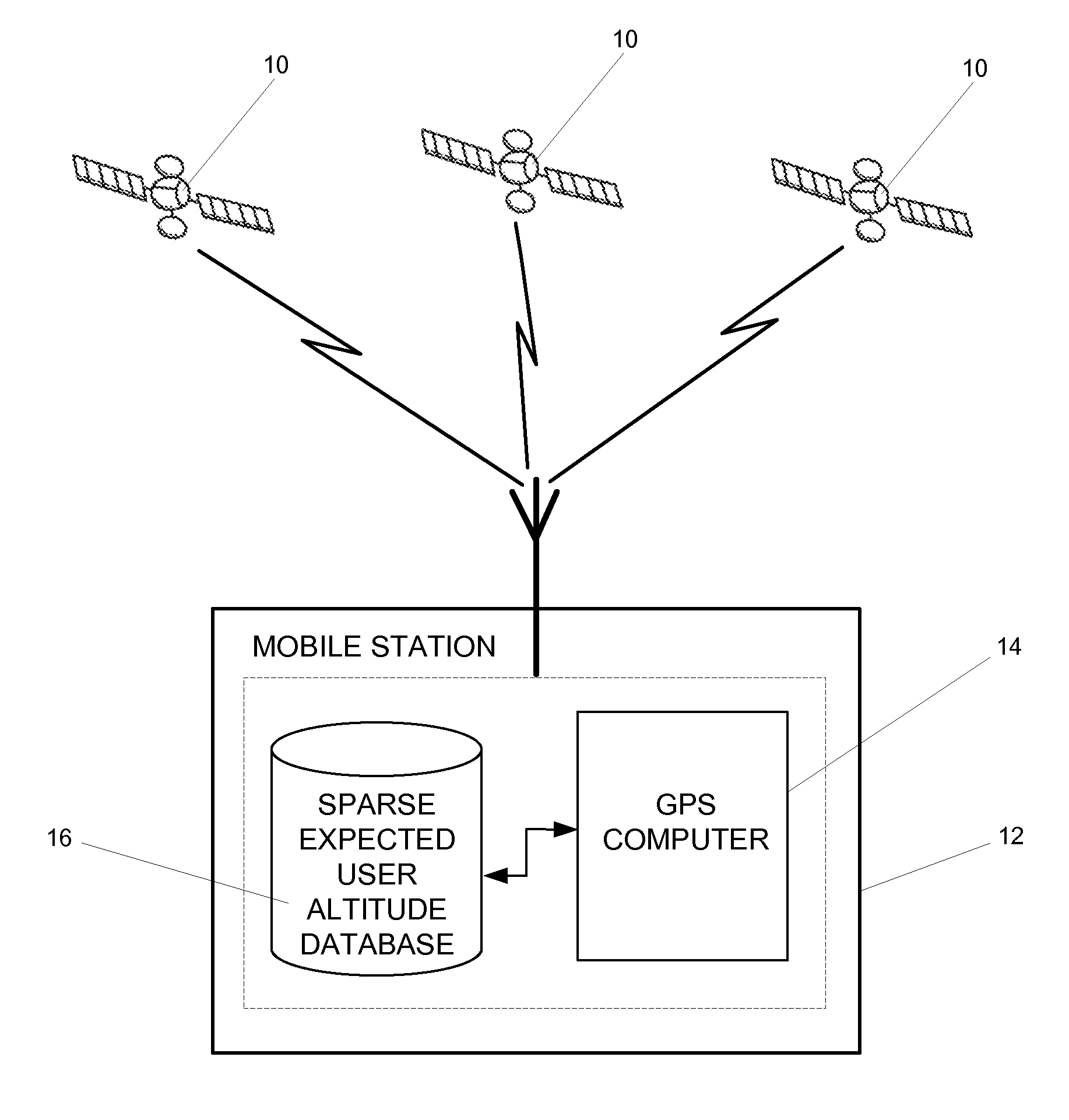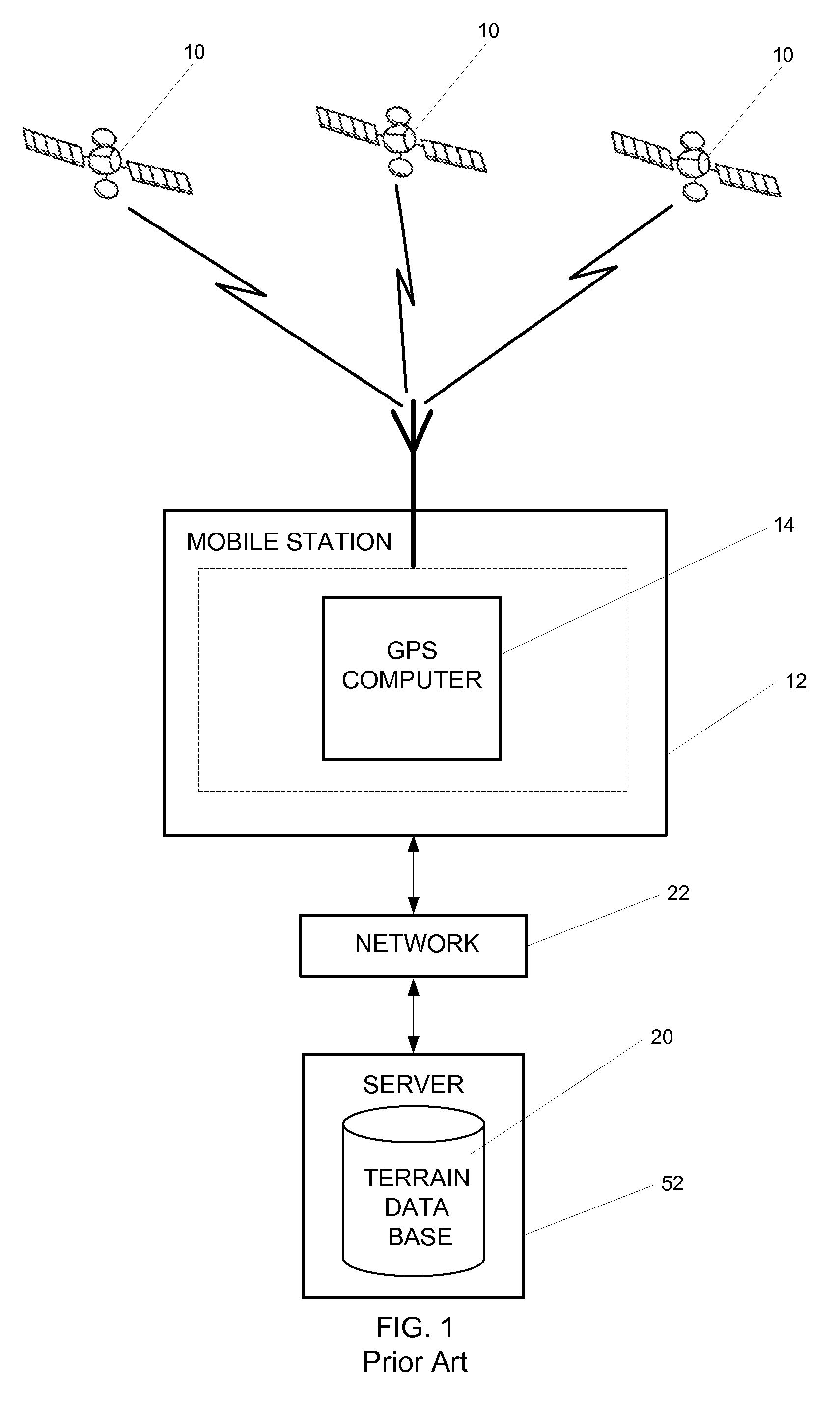Efficient use of expected user altitude data to aid in determining a position of a mobile station
a mobile station and expected user technology, applied in the field of position determination systems, can solve the problems of insufficient satellites to accurately determine an altitude, poor geometry of those satellites, inability to determine an altitude for a first positioning attempt or when the mobile station has moved, etc., to achieve faster time to fix, less memory, and higher yield
- Summary
- Abstract
- Description
- Claims
- Application Information
AI Technical Summary
Benefits of technology
Problems solved by technology
Method used
Image
Examples
Embodiment Construction
[0014]FIG. 1 shows a prior art system using the entire world terrain database for altitude aiding. In FIG. 1, satellites 10 send signal to a mobile station 12. A terrain database 20, inside a server or other external source 52, sends an altitude over communication network 22 to mobile station 12. The GPS signals and the localized altitude aiding are used by GPS computer 14 to determine the position of mobile station 12. In these prior art systems, terrain database 20 contains terrain maps of the entire earth, thus the need for an external server 52 or a very large memory source. The present system operates in a similar fashion; however the expected user altitude database is made up of selected portions of the worldwide terrain database, as modified for building heights.
[0015]FIG. 2 shows an example of the current invention, using a sparse expected user altitude database for altitude aiding. As shown in FIG. 2, satellites 10 send signal to mobile station 12. A sparse expected user al...
PUM
 Login to View More
Login to View More Abstract
Description
Claims
Application Information
 Login to View More
Login to View More - R&D
- Intellectual Property
- Life Sciences
- Materials
- Tech Scout
- Unparalleled Data Quality
- Higher Quality Content
- 60% Fewer Hallucinations
Browse by: Latest US Patents, China's latest patents, Technical Efficacy Thesaurus, Application Domain, Technology Topic, Popular Technical Reports.
© 2025 PatSnap. All rights reserved.Legal|Privacy policy|Modern Slavery Act Transparency Statement|Sitemap|About US| Contact US: help@patsnap.com



